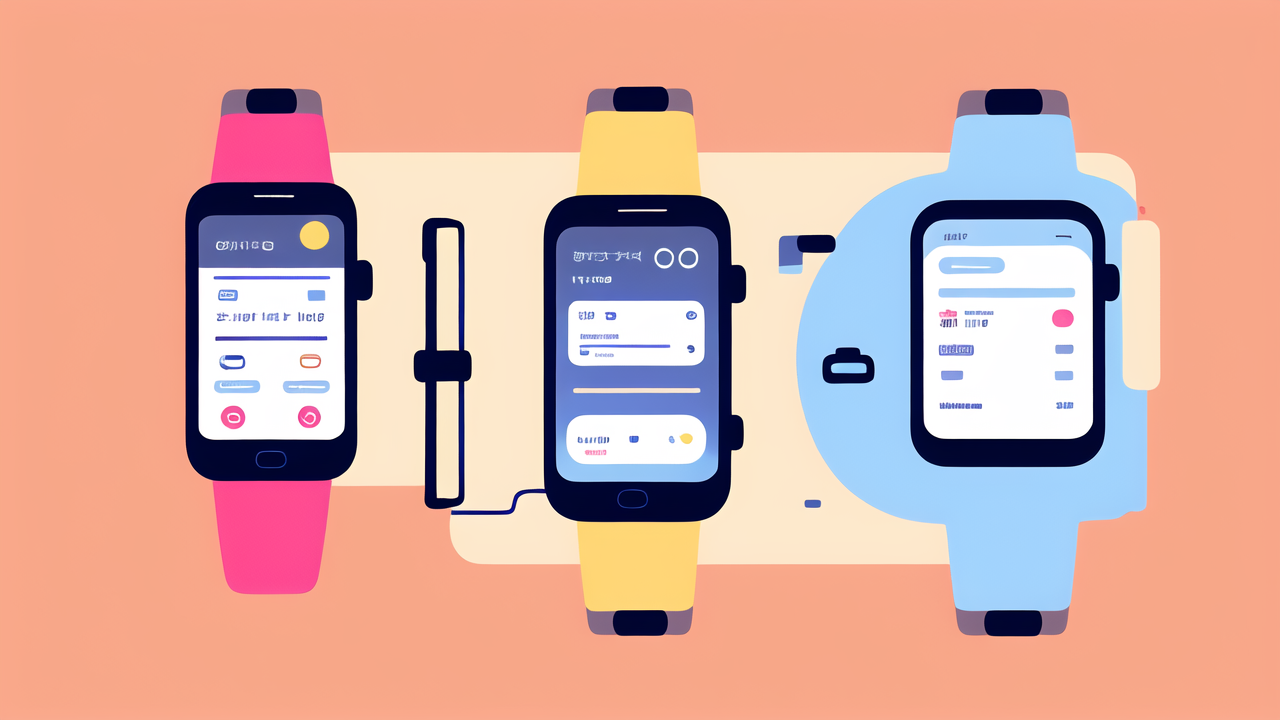The Rise of Smart Watches in the United States: A Market Overview
Understanding the Adoption of Wearable Technology
Smart watches have become a major trend in the US. They combine tech and fashion, appealing to a wide range of users. These devices offer convenience by bringing smartphone features to our wrists. They've grown from simple fitness trackers to powerful mini-computers.

The adoption of smart watches has been rapid. Many people now see them as essential gadgets. They help users stay connected and track health data. The ease of use and sleek designs have boosted their popularity. As prices have dropped, more people can afford them.
Smart watches are no longer just for tech enthusiasts. They've become mainstream accessories. From busy professionals to fitness buffs, many find them useful. The market continues to grow as features improve and styles diversify.
The Role of Health and Fitness in Smart Watch Popularity
Health and fitness features have been key to smart watch success. These devices can track steps, heart rate, and sleep patterns. Many models offer workout modes and GPS for runners and cyclists. Some even monitor stress levels and encourage mindfulness.
Users love having health data at their fingertips. It motivates them to stay active and make better choices. Smart watches can send reminders to move or drink water. They've become personal health assistants for many.
Fitness apps on smart watches make tracking goals easy. Users can set targets and see progress in real-time. This instant feedback keeps people engaged with their health journey. As health awareness grows, so does the appeal of these wearable devices.
Market Leaders and Innovators in the Smart Watch Industry
Apple leads the smart watch market with its Apple Watch series. They've set high standards for design and functionality. Samsung and Fitbit are also major players, offering strong alternatives. Google's Wear OS powers many brands, creating a diverse ecosystem.
Each company brings unique features to the table. Apple focuses on seamless integration with iPhones. Samsung offers compatibility with both iOS and Android. Fitbit emphasizes fitness tracking and long battery life.
Smaller brands are also making waves with innovative designs. Garmin caters to serious athletes with rugged, feature-rich watches. Fossil blends traditional watch styling with smart features. The competition drives constant improvement and innovation in the industry.
Technological Advancements in Smart Watches
Breakthroughs in Battery Life and Processing Power
Battery life has been a key focus for smart watch makers. New models can now last several days on a single charge. This is thanks to more efficient processors and better power management. Some watches use solar charging to extend battery life even further.

Processors in smart watches have become more powerful. They can handle complex tasks without lag. This allows for smoother interfaces and more advanced apps. Despite their small size, modern smart watches pack serious computing power.
Energy-saving modes help balance performance and battery life. Users can choose to disable certain features to extend usage time. As technology improves, we can expect even longer-lasting smart watches in the future.
The Integration of AI and Machine Learning
AI and machine learning are making smart watches smarter. These technologies help devices learn user habits and preferences. This leads to more personalized experiences and proactive assistance.
Voice assistants like Siri and Google Assistant are now common on smart watches. They can answer questions, set reminders, and control smart home devices. AI also helps improve health tracking accuracy and provide insights.
Machine learning algorithms can detect patterns in user data. This allows watches to predict and alert users about potential health issues. As AI advances, smart watches will become even more helpful in daily life.
Sensors and Tracking: Expanding the Smart Watch Ecosystem
Smart watches now include a wide array of sensors. These can measure heart rate, blood oxygen, and even ECG readings. Some watches can detect falls and automatically call for help. GPS tracking has improved, offering precise location data for fitness and navigation.
New sensors are expanding what smart watches can do. Some can measure skin temperature or detect hand gestures. Others are exploring ways to monitor blood sugar levels non-invasively. These advancements could revolutionize health monitoring.
The ecosystem of apps and services for smart watches keeps growing. This allows users to customize their experience. From fitness coaching to productivity tools, there's an app for almost everything. The versatility of smart watches continues to increase with each new sensor and feature.
The Future of Smart Watches in the Fashion Landscape
Blending Functionality with Fashion: Next-Gen Designs
Smart watch design is evolving to be more fashionable. Manufacturers are partnering with fashion brands to create stylish options. This helps smart watches appeal to a broader audience, beyond just tech enthusiasts.

Customizable watch faces allow users to match their style or outfit. Some watches offer interchangeable bands for different occasions. High-end materials like titanium and ceramic are being used in premium models.
Future designs may include flexible displays that wrap around the wrist. This could allow for larger screens without bulky cases. As technology shrinks, smart watches may become even more discreet and elegant.
The Impact of Smart Watches on the Accessory Market
Smart watches are changing the traditional watch market. Many people now choose smart watches over analog ones. This has forced traditional watchmakers to adapt and offer their own smart options.
The accessory market has expanded to include smart watch bands and cases. Designer brands are creating luxury accessories for popular smart watch models. This merges the worlds of tech and fashion accessories.
Smart watches are also influencing other wearable tech. We're seeing smart rings, smart jewelry, and even smart clothing. The line between technology and fashion accessories continues to blur.
Predicting Consumer Trends: What's Next for Wearable Technology?
Consumers are looking for more integration in their tech ecosystems. Future smart watches may act as keys for cars and homes. They could become central hubs for personal IoT devices.
Health monitoring will likely become more advanced. We may see features like continuous glucose monitoring or blood pressure tracking. Mental health support through stress detection and mood tracking could also emerge.
Augmented reality might find its way to smart watches. Small projectors could display information on your hand or nearby surfaces. As technology progresses, the possibilities for smart watches seem endless. The future of wearable tech is bright and full of potential.




Leave a comment
This site is protected by hCaptcha and the hCaptcha Privacy Policy and Terms of Service apply.